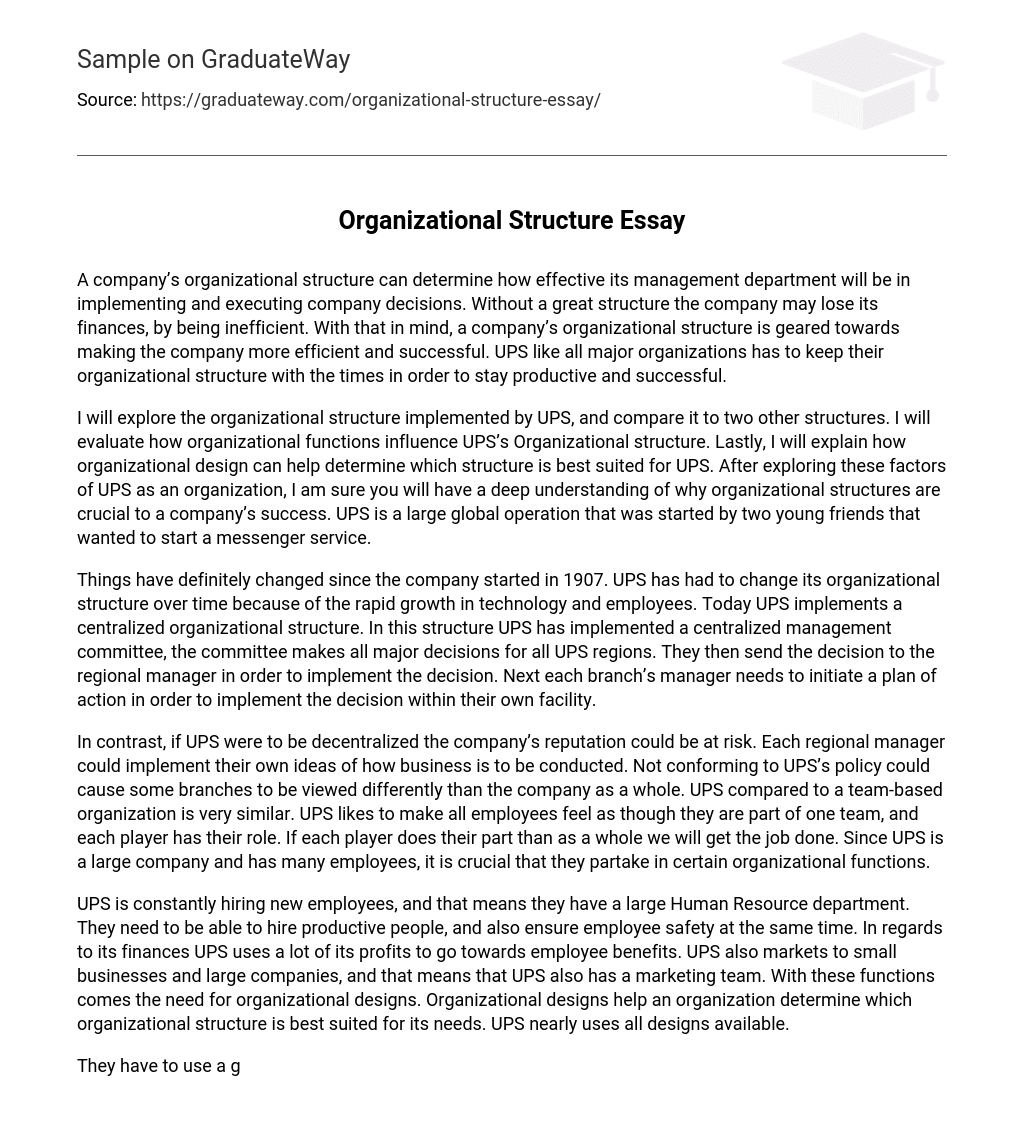A company’s organizational structure plays a crucial role in the effectiveness of its management department in implementing and executing company decisions. If a great structure is lacking, the company may face inefficiencies, resulting in financial loss. Thus, the main purpose of a company’s organizational structure is to enhance efficiency and foster success. Just like any other major organization, UPS must update its organizational structure to remain productive and successful.
The text examines the structure of UPS, comparing it to two other structures and evaluating how organizational functions impact UPS’s structure. It also explains how organizational design can determine the most suitable structure for the company. By exploring these aspects, one can gain a thorough understanding of the significance of organizational structures in achieving success. Moreover, it emphasizes that UPS is a sizable global enterprise founded by two friends with the aim of creating a messenger service.
Since its establishment in 1907, UPS has experienced substantial changes as a result of technological advancements and an expanding workforce, leading to the adoption of a centralized organizational structure. This structure involves the creation of a centralized management committee that takes responsibility for crucial decisions throughout all UPS regions. Subsequently, these decisions are conveyed to regional managers who oversee their implementation. Ultimately, each branch manager must devise an action plan to execute the decision within their specific facilities.
Decentralizing UPS could pose a risk to the company’s reputation as each regional manager may have their own interpretations of how to conduct business. This could lead to branches being perceived differently than the overall company if they do not adhere to UPS’s policies. Similarly to a team-based organization, UPS aims to foster a sense of unity among employees where each individual plays a role in achieving success. Given its size and workforce, it is essential for UPS’s employees to actively engage in specific organizational functions.
UPS has a significant Human Resource department due to its constant hiring of new employees. It focuses on hiring productive individuals and ensuring their safety. The company allocates a considerable portion of its profits towards employee benefits. Moreover, UPS caters to both small businesses and large companies, leading to the existence of a marketing team. These functions necessitate the implementation of suitable organizational designs, which assist in determining the most appropriate organizational structure for UPS’ requirements. The company utilizes almost all available designs.
When opening a new branch in a foreign country or region, UPS must use a geographical design. This is because UPS is customer-based and aims to provide new products or services. In order to operate these designs in synchronization, UPS has adopted a more centralized organizational structure. Throughout their 100+ years of experience in package delivery, UPS has gained valuable knowledge. One of the major lessons learned is the importance of determining the most effective organizational structure for efficient and successful operations. Today, a centralized organizational structure works best for UPS. Organizational functions play a crucial role in ensuring smooth operations at UPS. The influence of organizational designs has been significant in determining the optimal organizational structure. Going forward, UPS will continue to succeed by adapting their organizational structure to their current circumstances.





